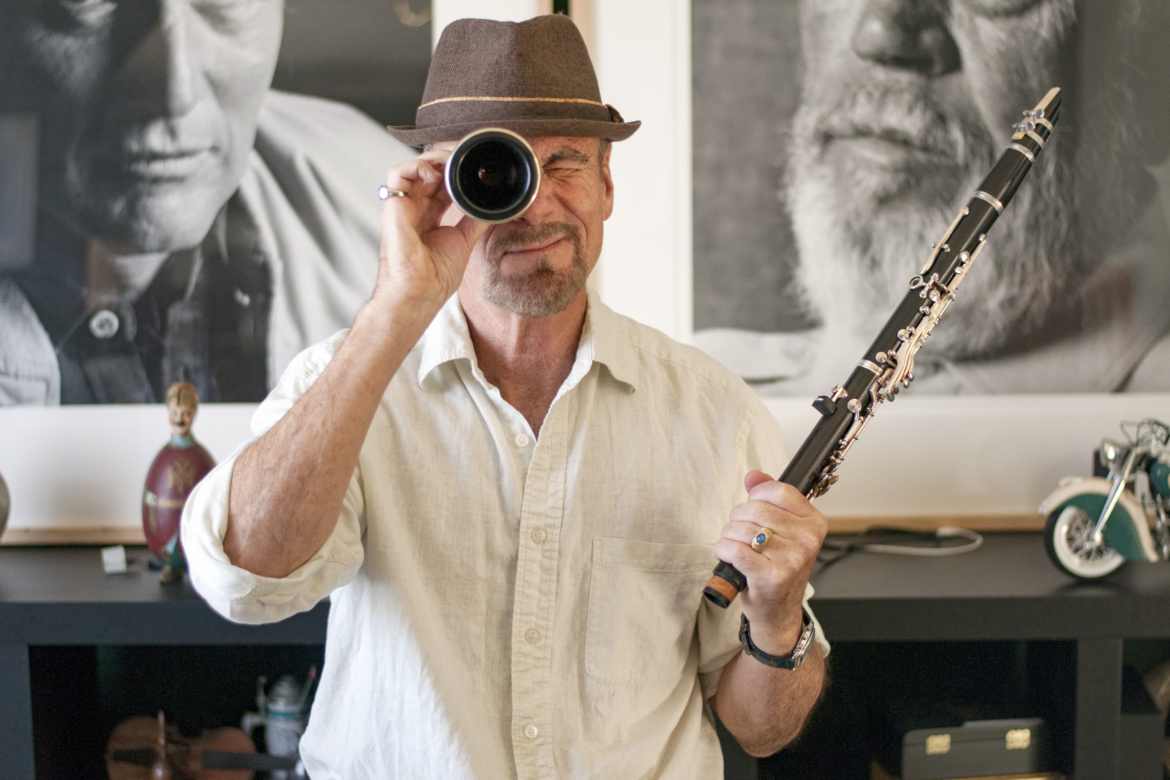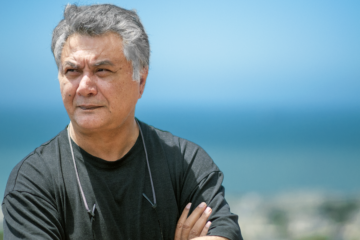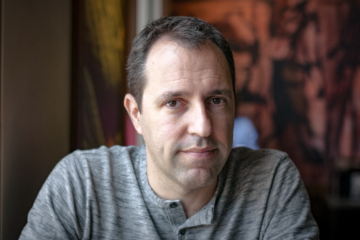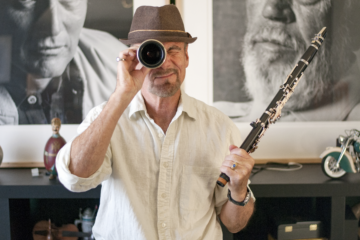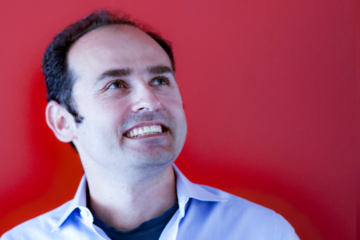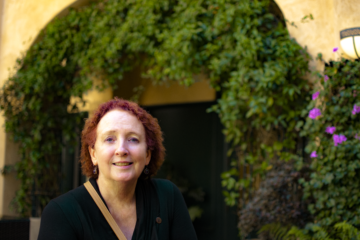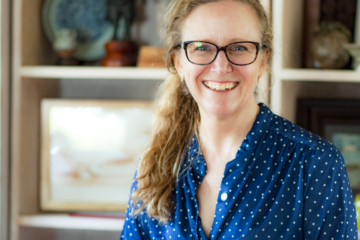Tom: CEO & Co-Founder at Pixterity
“Luck matters but you have to be prepared for it. It’s good to listen well. I learned to do that with my subjects. Listening to people helps you prepare for what you need to do.”
Message to entrepreneurs: “Find people you can trust.’”
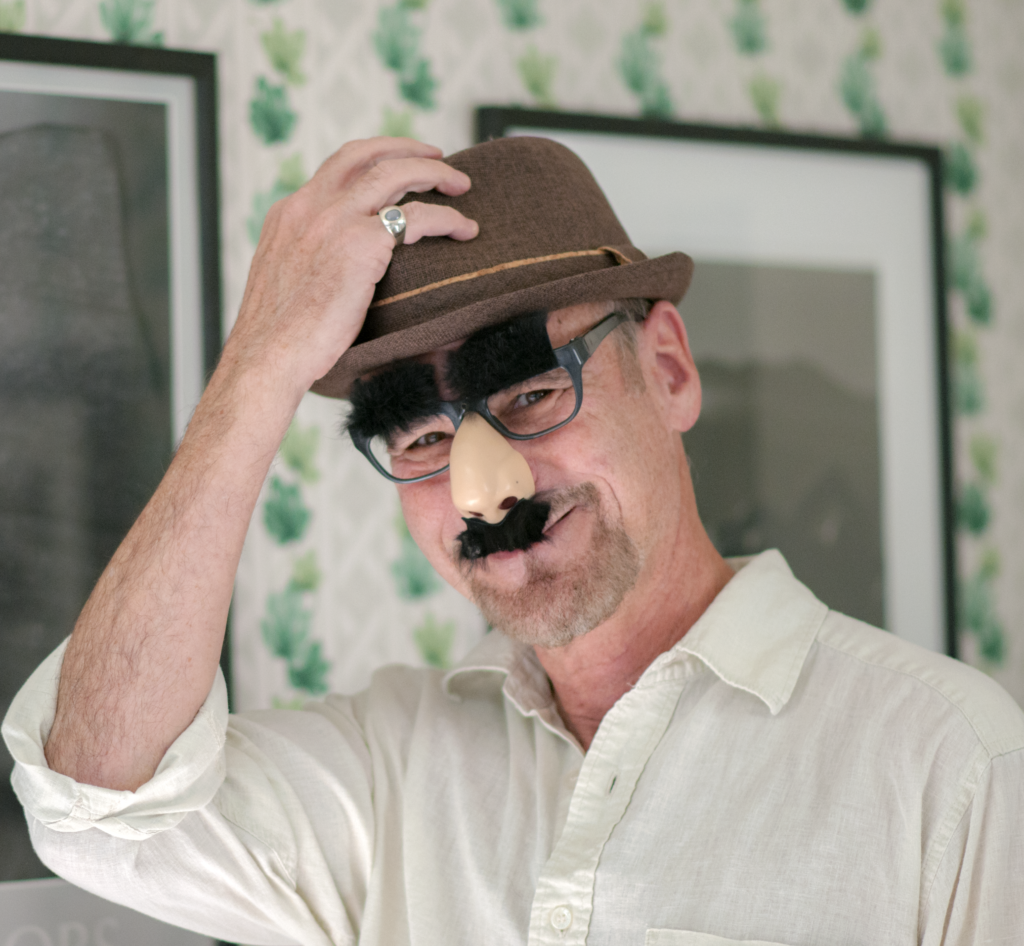
I’ve had a long career in photography, making portraits as diverse as two sitting American presidents for the covers of Time and Fortune, to East LA gang members. My first two portraits were Marx and Lennon. Really! Groucho and John.
I started Pixterity to solve a screaming-in-your-face problem that no one else has solved.
Pixterity is the first enterprise marketplace for photography. The industry desperately needs it. Not just photographers but also buyers. Photography is the lingua franca of commercial communication. Right now, both sides of the marketplace are suffering. Pixterity will enable buyers to find the content that they need to communicate with their customers, and it will help photographers to thrive–not just survive. I’ve never met a photographer who wasn’t several days into a photo assignment–six weeks behind on invoicing–wondering why cash flow makes sucking sounds. Jobs are cobbled together with various flavors of desktop software to create invoices, then sent by email.
Pricing is guesswork. Payments are ”your check is in the mail.” Very 1995.
The fundamental problem is this: If the workflow is offline, content is offline–virtually invisible to enterprise buyers.
Lots of companies address the retail side of the photo business, particularly pre-shot consumer stock photos. But the larger, more lucrative enterprise segment is grossly underserved. Commercial photographers have no channel to monetize their vast reservoirs of residual content. Enterprise buyers are frustrated by the retail catalog of stale and overused stock photos. They would love to re-license from that pool of premium professional content. But they cannot. That’s our focus.
Pixterity’s solution is a web platform that captures content seamlessly–filtered through our cloud–enabling photographers to electronically invoice and deliver new jobs to their clients with actionable intelligence supporting complex B2B licensing transactions, analytics-based pricing, digital asset management, electronic payments, and long-term client relationships.
A business automation app married to an e-commerce exchange moves workflow online, captures content, and monetizes both. The Pixterity platform fosters an addictive engagement and network effect. Enterprise buyers see that the best source for stock photos is the same platform that they use to work with photographers they’ve already vetted and hired.
Pixterity is building an enterprise content cartel, cutting our competitors out of the picture literally.
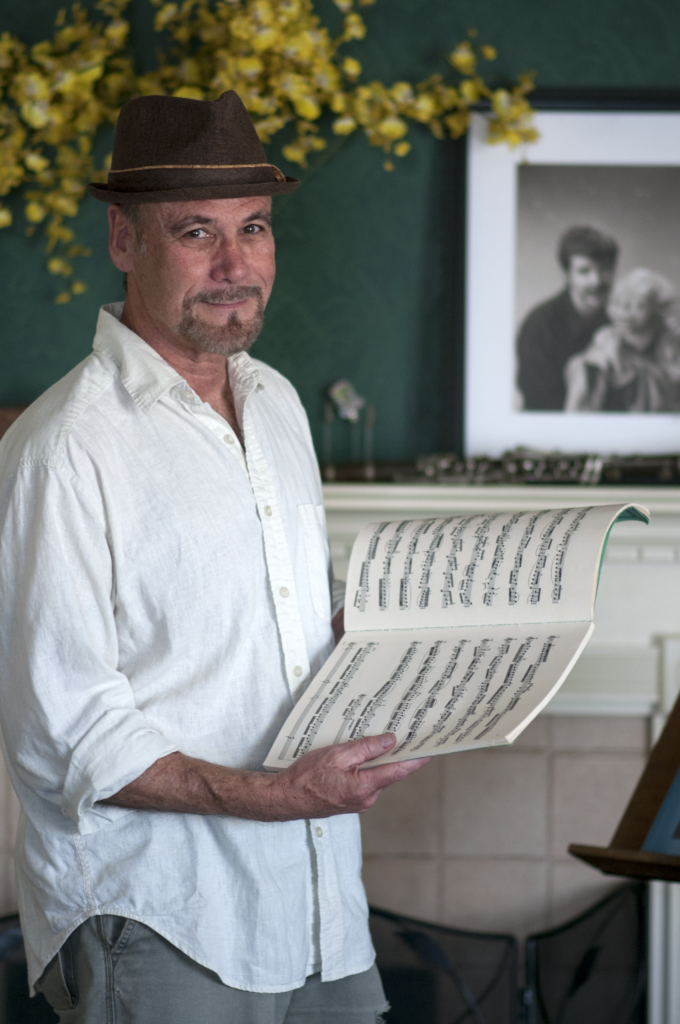
Early Life:”In the Right Place at the Right Time”
I was always an entrepreneur. When I was eight years old, I was sent to a military academy. I boarded there for two years. On a field trip to a carnival, I won about a dozen goldfish by throwing ping-pong balls into little round fishbowls. Somehow I got all those fish back to my dormitory, where I put them into a larger aquarium my parents bought for me. I started selling goldfish at a profit to the other kids. That was my first venture.
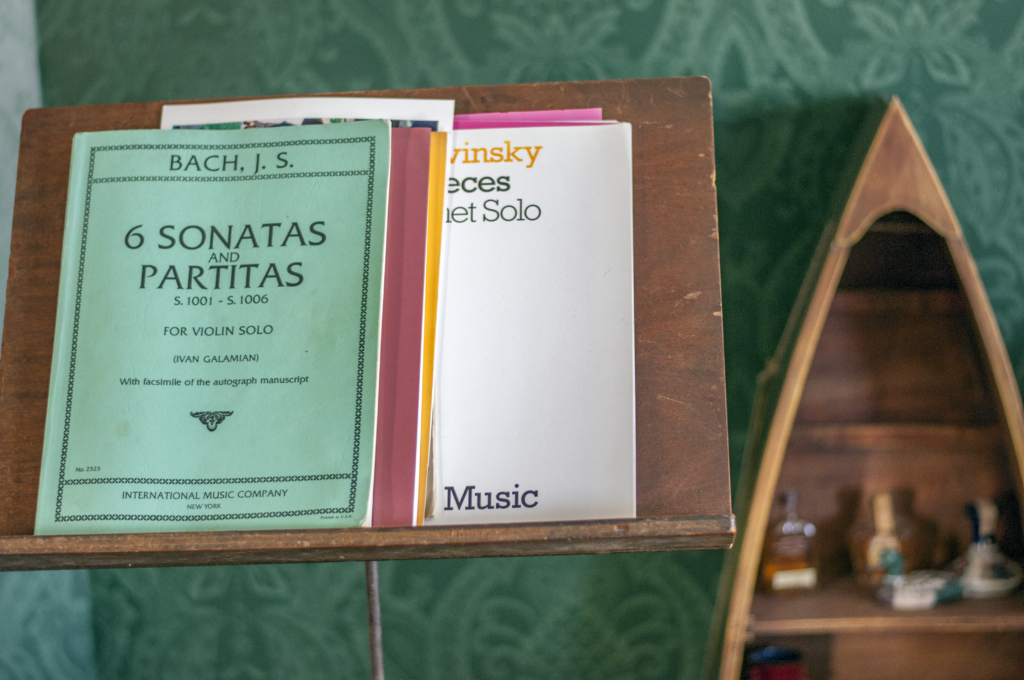
Growing up, I wanted to be the world’s greatest clarinet player. My father, a violinist, tells me I could hum the Beethoven violin concerto before I could talk. I imagined becoming comfortably ensconced in a symphony orchestra with my little cottage and music students. Then photography happened. It was a way to make a living. I didn’t want to wait fifty years for the principle clarinet player of the New York Philharmonic to die before I got a job. I had talent in a couple of different things, but I didn’t know how to get to where I wanted. Whatever took over, that was the direction I went.
I grew up commuting between Las Vegas and Beverly Hills. We had a home in Las Vegas because my father played in the orchestras there. Las Vegas in the sixties was a conservative place to live–a strict Mormon society at the height of hippydom. No long hair, no bell bottoms and beads. There was no sex, drugs, and rock-and-roll going on in Las Vegas in those days. Not off the Strip, anyway.
For my senior year of high school, we moved back to Beverly Hills. The kids in my school were the daughters and sons of famous screen writers, directors, actors, producers. One of my friends lived in a mansion with a tennis court. I played tennis there often after school. It was 1969. All the kids had expensive Nikons. It was the accessory du jour. Some of them took pictures of people they knew and sold them to fan magazines. I saw them drive in fancy cars and spend money. I thought, I want a piece of that.
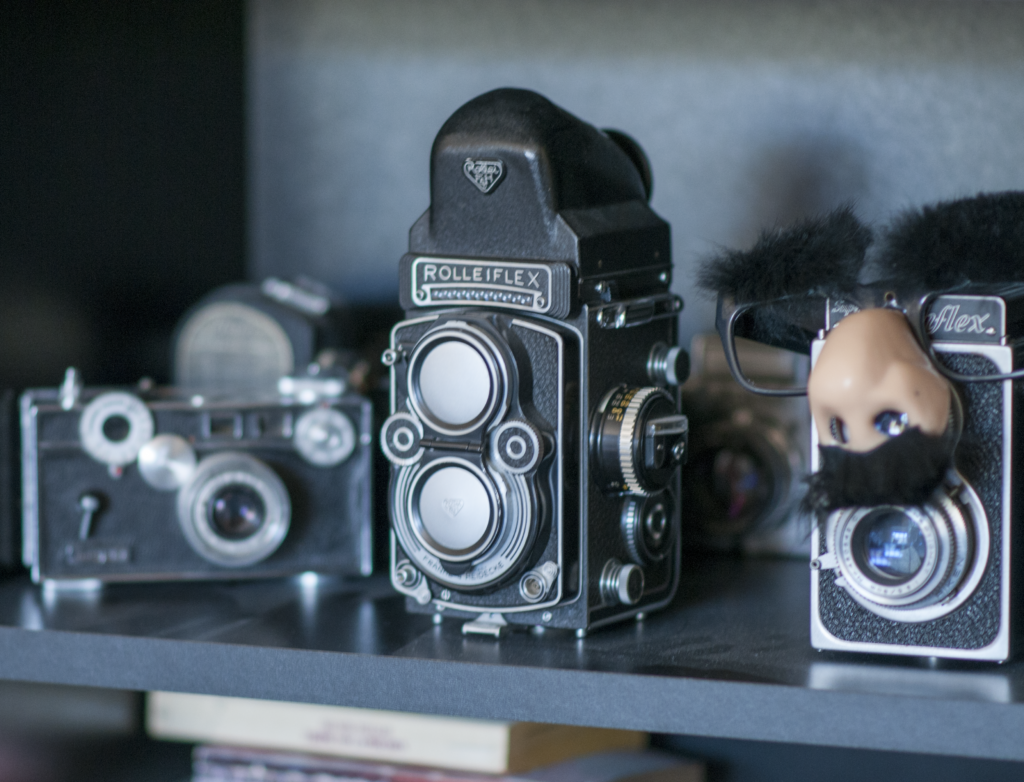
I stole my first camera, the secret is out! A not-so-famous film director was making a “B” movie on location at my friends house. He left a camera–a Pentax Spotmatic covered in red lizard skin–for months in the cabana, near the tennis court. One day I picked it up and discovered that it was broken. I paid to fix the shutter, and I started carrying it around with me everywhere. So that’s how I stole my first camera, a purloined Pentax.
I won a music scholarship to USC. One morning on campus I was sitting with my Pentax near the campus library. Suddenly, the library doors burst open and this guy comes running out with a knife. He throws the knife away and he has people chasing him and screaming. He had attacked some woman in the library stacks. I ran with the crowd, taking pictures. They chased him into the law school building, where he barricaded himself.
As we’re waiting for the police, a kid taps me on the shoulder and says, “Hey, I heard you have pictures of this whole thing, can I see them? I’m the editor of the school paper, the Daily Trojan.” So he looked at them and went, ”This is great, we’re going to run one of these on the front page.” Terrific! My first published picture. He said, “How would you like to work for the school paper, in exchange for free film, processing, you can use the dark room.” Hell, yeah! So I started working for the unfortunately-named Daily Trojan. That photo editor was my long-time friend Tony Korody who had a long career shooting for People magazine.
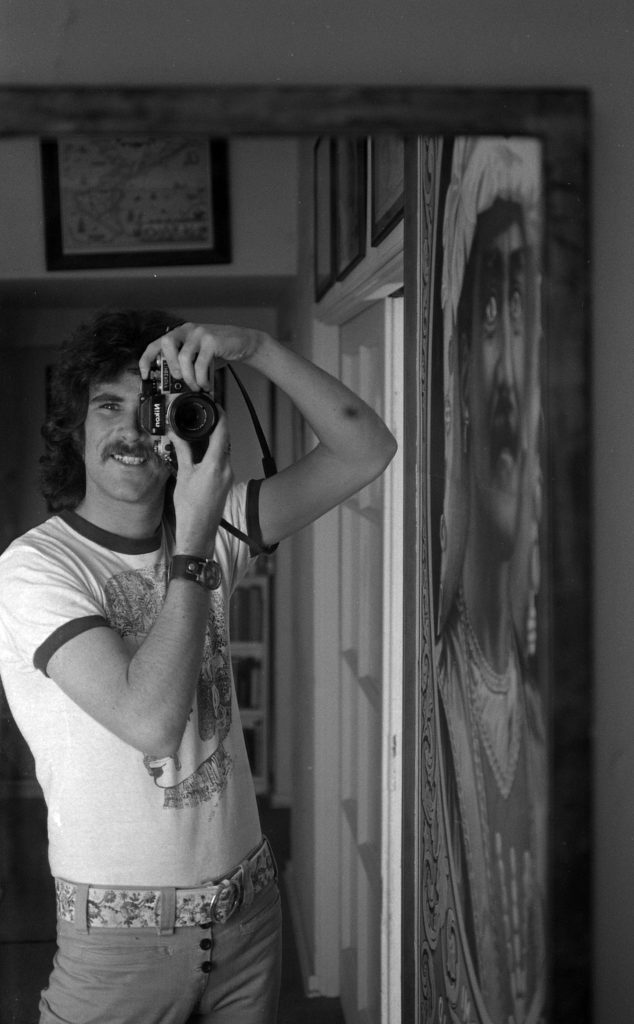
© Tom Zimberoff / all rights reserved. This photograph may not be shared, copied, distributed or altered.
The Daily Trojan was my first exposure to people who really cared about photography. In those days–this is 1970 or 1971–there were no university degrees in photography. You could go to a trade school, but you couldn’t get a university degree. At the Daily Trojan, I met student photographers who were all journalism majors. They exposed me to the work of W. Eugene Smith, Henri Cartier-Bresson, Ansel Adams, Philippe Halsman, Richard Avedon, Irving Penn ….
USC had and still has the greatest cinema department in America. They started an elective course in photo-journalism. I enrolled on a whim. Two weeks into the course, we were given weekend homework to create a photo essay as if we had a newspaper assignment. That Saturday night, instead of doing my homework, I was in a Beverly Hills nightclub called ”The Daisy,” which was owned by the same friend’s father who owned the house where I stole the camera. The Daisy closed in the 70s, but back then it was the place to be. The sheikh of so-and-so would be there, along with Frank Sinatra and his Rat Pack. I could go there even though I was underage because of my friend. So this Saturday night, I was playing pool with another friend, Steve, whose father was the jazz singer, Mel Torme. Suddenly the door bursts open and in comes actor Max Baer–“Jethro” on the TV show, The Beverly Hillbillies. He comes running in, yelling, “Help, help! My camper is on fire!” An electrical fire had broken out in his RV in front of the nightclub, and then the RV rolled backwards into a lamppost in front of the Beverly Wilshire Hotel.
Steve and I ran out with the fire extinguisher and I said, “Wait, let me get my camera.” So I got my Pentax and took a picture of Steve with the fire extinguisher, with the flames leaping out of the RV. So I have the son of a famous singer, in front of the Beverly Wilshire Hotel, helping put out the fire for a TV star.
I thought, I am going to call the wire services. I call the Associated Press first: There was no one there to answer the phone, it was late Saturday night. So I called UPI and I told the guy what happened and he said, “Get here as fast as you can!” I got into my little Fiat and high-tailed it to UPI. He ran the film and goes, “Yeh, this is great, we’ll run it on the wire. We’ll pay you $15.” I said, “Fifteen dollars? Come on!” We haggled, and I managed to negotiate another $15. To this day, I think I am the only photographer that got a wire service byline with my name. Sunday was a slow news day, so it made the front page of newspapers all across the country. On Monday morning, I brought the front pages of the New York Daily News and the Los Angeles Herald-Examiner to my photo-journalism class.
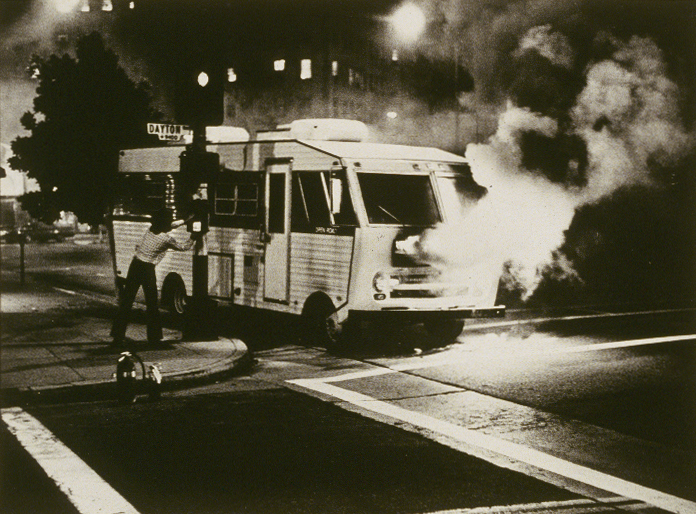
© Tom Zimberoff / all rights reserved. This photograph may not be shared, copied, distributed or altered.
I said, “Is this ok?” The teacher said, “Okay, Zimberoff, you got an A in the class. Don’t come back.” I shot my first assignment at 19 years old for Time magazine–I photographed the great violinist, Jascha Heifitz, at his final recital. It was a thrill to me because I grew up listening to Heifetz because of my father. By the time I was 21 , I had toured with the Rolling Stones, Stevie Wonder, and the Jackson Five, spent a day photographing John Lennon, and shot the first cover of People magazine.
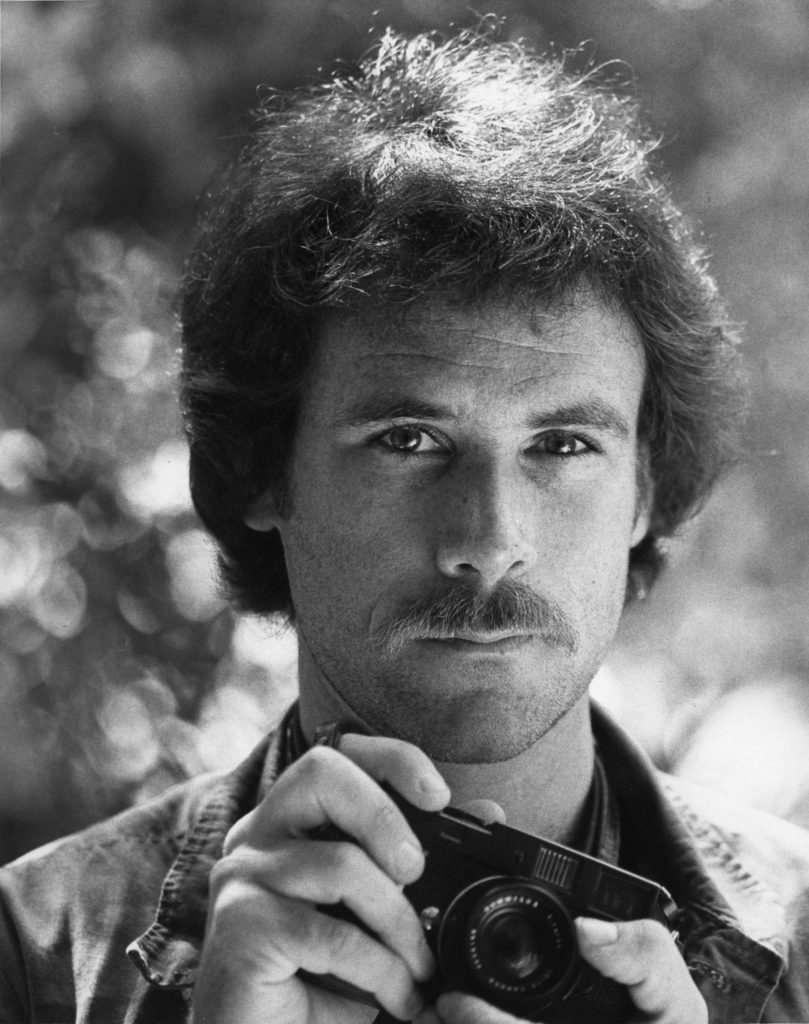
© Tom Zimberoff / all rights reserved. This photograph may not be shared, copied, distributed or altered.
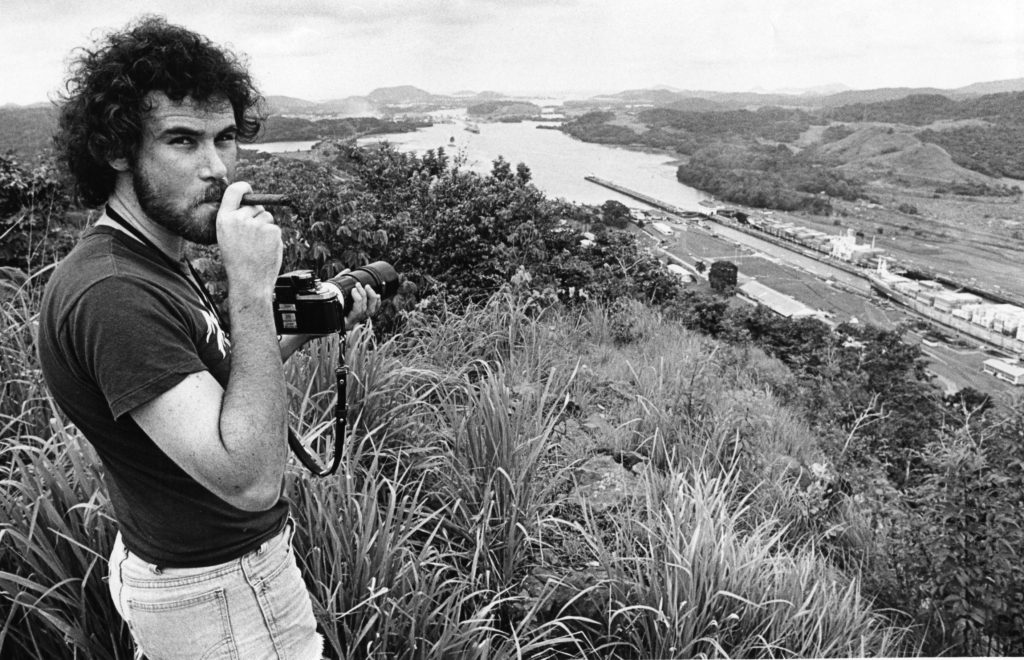
© Tom Zimberoff / all rights reserved. This photograph may not be shared, copied, distributed or altered.
I never set out to be a photographer. I just happened to be in the right place at the right time and made some pictures that garnered a lot of attention. I found that I was good at it. I was very young, making a lot of money, traveling with a lot of famous bands. It was a fantasy come true to meet your idols and be friends with them. I was successful, in part, because of luck, but it was also determination, hard work, aesthetics, and empathy. What I did best was portraits because I love people and their stories.
Photography Career: “Being a Big Game Hunter”
My career has been really fun. In addition to everything else, I got to shoot assignments like “The Most Eligible Women in America” for Esquire…and an ad campaign for the U.S. Navy. I short-circuited a Los Angeles-class nuclear attack submarine with my electronic strobe lights. Whoops!
A portrait photographer is like a big game hunter. You stalk your prey, you take your best shot, you try to avoid gratuitously wounding your subject, and then you hang their heads on the wall to admire like trophies. It takes only 125th of a second to make a photograph. But there can be hours, days, weeks, months of work before you get to that point. Before I’d ever sit a camera between us, I’d find out as much as I could about the person, and I’d watch the person–this is the twitch you have, this is how you put your arms, this is how you turn your head. I’d watch for interesting traits. All the conversation would happen before. During the photo shoot, it was usually very quiet.
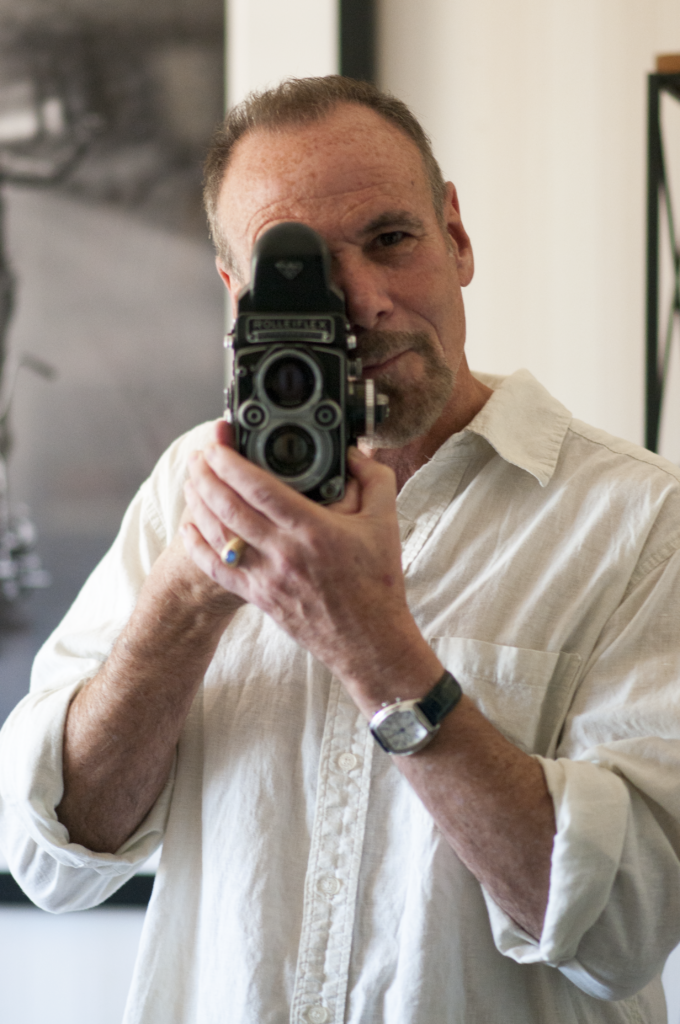
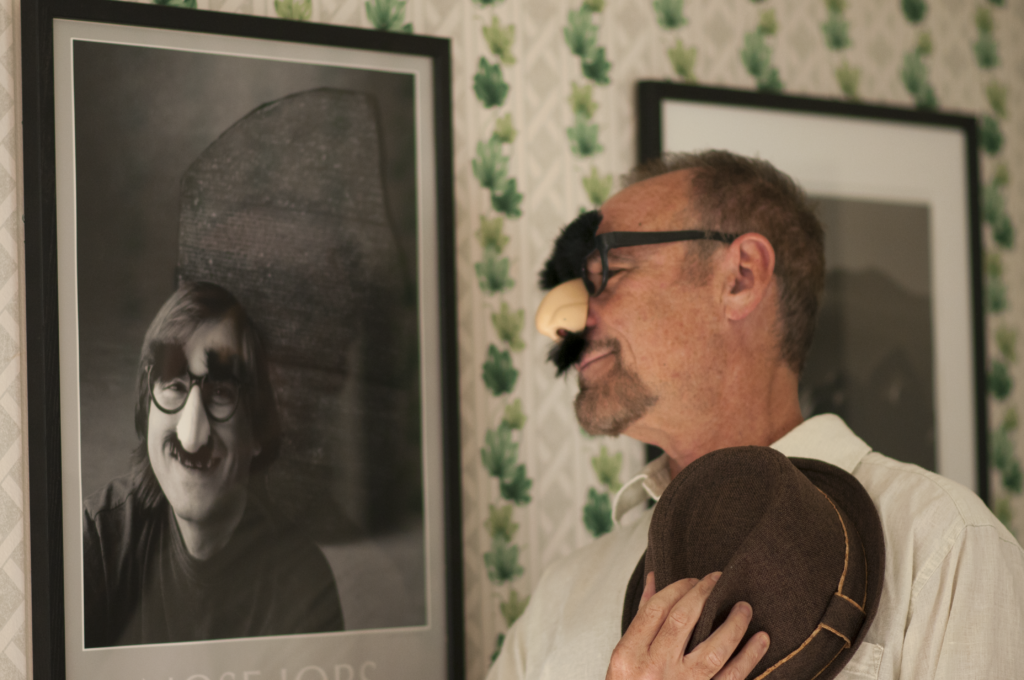
Few people like their portraits. It’s not my business to flatter them. I don’t try to make anybody look bad, but most people want to be glamorized.
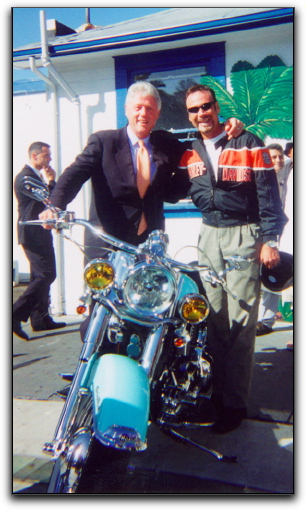
© Tom Zimberoff / all rights reserved. This photograph may not be shared, copied, distributed or altered.
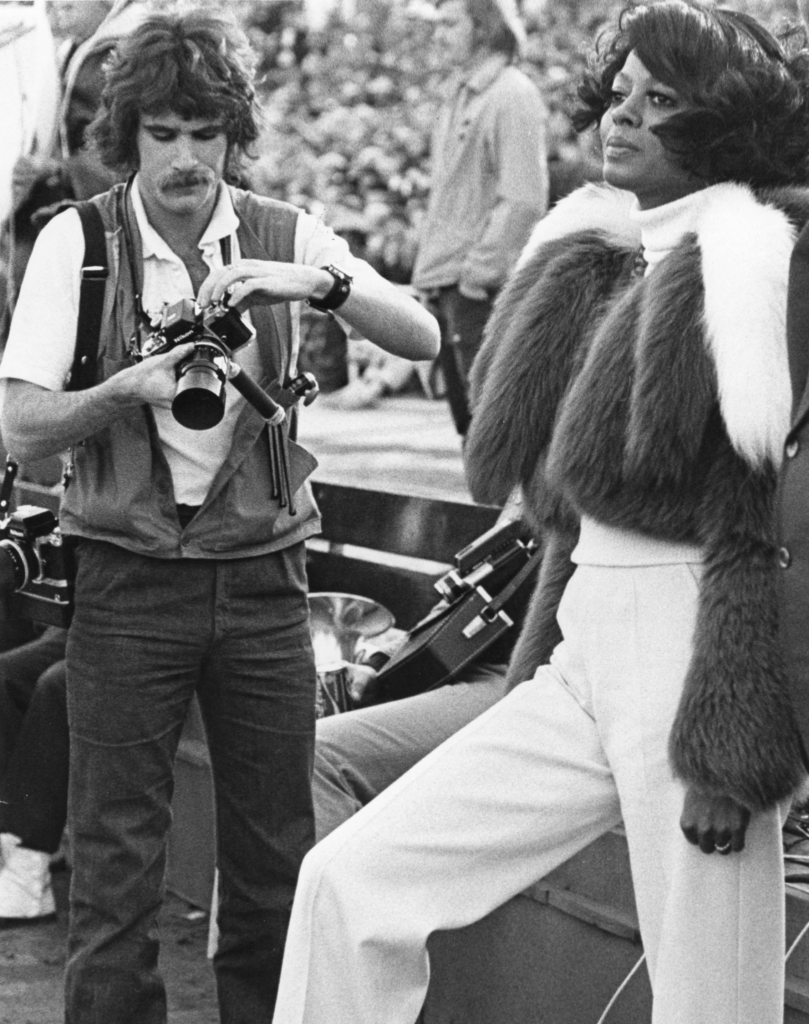
© Tom Zimberoff / all rights reserved. This photograph may not be shared, copied, distributed or altered.
I am proud of my body of work, my portraits. I enjoyed conceiving of a set of portraits that no one else had addressed as a collection. For example, it took a long time to photograph all the great winemakers of California, and I spent six years in my spare time photographing all the greatest symphony orchestra conductors of the twentieth century. I suppose I am proudest of the conductor series. Typically, photographers take photos of conductors waving a blurred baton in a dark concert hall, wearing a monkey suit, and a facial paroxysm of rapture. From working with conductors as a musician, I knew there was so much more to them than that, so I wanted to photograph conductors away from the podium. To reach them, you have to go through their handlers, and you would hear something like, “Oh, you want to photograph maestro, great! On Thursday we have a lot of guys from the newspaper coming, you can come to the balcony during rehearsal.” I tell them: “No, you don’t understand. I want him for at least 8 hours, away from the concert hall.” It took a while, but I did it. Eastman Kodak donated a set of my prints to the Museum of Performance and Design in San Francisco, and they’ve toured other places. Once I did an exhibition at an art museum in Canton, Ohio. At the reception, there was a string quartet playing in the museum, surrounded by all the huge portraits. The musicians told me that they never felt so intimidated. It was the hardest concert they ever played because they felt that all these great conductors were “staring” at them.
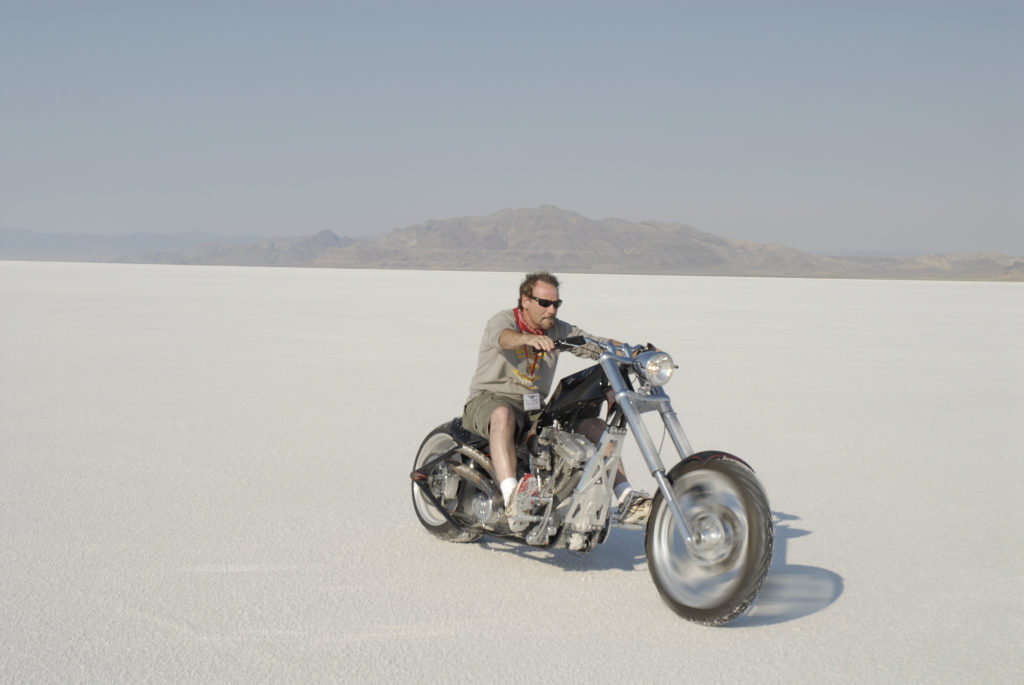
© Tom Zimberoff / all rights reserved. This photograph may not be shared, copied, distributed or altered.
First Start-Up: “Big D for DIGITAL”
In the 80s and 90s, Apple was one of my biggest clients. During a shoot with then CEO John Sculley, I joked that it was hard to do anything with this Macintosh toy to help me run my business. He’s looking at me like, what?! He said, “Okay, wise guy, why don’t you create something for it?” I said, “I am not an engineer, I am an artist.”
But the idea rattled around in my head for a long time. A couple of years later, I woke up, and I guess I got up on the wrong side of the bed. I hung up my cameras, and I didn’t realize that it was pretty much for good. I locked myself in my house for two years and taught myself to code. I took all the expertise that I had about the business of photography and I created a software application called PhotoByte®. I called Sculley: “Guess what? Remember that conversation we had? Well, I made something, and I want to show it to you.” So he set up a a demo. Afterward, I was asked, “How would you like to run a company?” They were going to invest. I am breaking my face smiling.
Long story short, in the time it took me to drive home from Cupertino to Sausalito, Sculley got fired. I didn’t know how else to pursue it. So I thought, “Hey, I’ve got a great piece of software, I am going to sell it to photographers and get rich.” I hired a marketing team and a boiler room full of cold callers and we started dialing for dollars. It became the market leader, but I wasn’t making my dent in the cosmos. It took me a while before I learned about the world of angels and VCs. But I started talking to business leaders I’d met while shooting assignments for Fortune and Forbes. I was introduced to someone who, supposedly, had great engineering chops and clout in The Valley. The company I founded morphed into a new entity. The biggest mistake I’ve made in my life was letting him run it. After raising millions of dollars, this guy’s brilliant brainstorm was that once the number of photographers using the software I created reaches critical mass, we can sell them film on the internet! He didn’t see the locomotive with a big D for DIGITAL barreling down the track at 200 mph into his face. And he didn’t appreciate the importance of stock photos as the perfect e-commercial product: very valuable bits that can be delivered to customers on a regular basis without a UPS truck. By the time he started to listen to my concerns, the Tech Bubble burst. It was the turn of the millenium. I made a solemn vow to the photographers who used the product that it wouldn’t go away, because so many depended on it. So they’ve been downloading it for free off my personal website for sixteen years. I had an ulterior motive. I was waiting for the planets to re-align with the confluence of data analytics, universal broadband, and the cloud; all of which together would make every photographer’s, and every publisher’s, dreams come true.
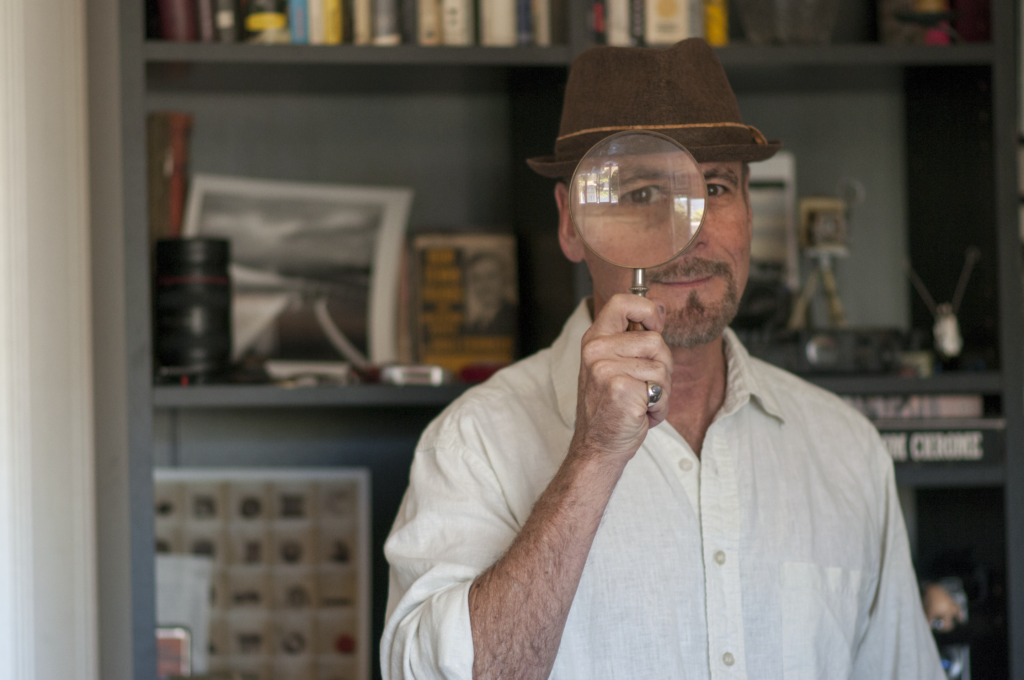
Latest Venture: “I Surround Myself with Smart People”
I feel a responsibility to all photographers and to all publishers of photography, which is used to help consumers make cultural, political, and commercial decisions each and every day. I am naturally impetuous–I have to hold myself back so I don’t go off half-cocked. It’s almost against an entrepreneur’s nature to weigh risks too carefully, yet one must. I’ve learnt to do it.
The start-up is all-consuming. I’ve had to sacrifice other things that I’d like to do. Particularly my music. The clarinet was my first love. I hit myself over the head, because I wish I had time to practice. I don’t want to hear myself unless I am really good, and I am not really good unless I spend three to four hours a day playing.
I used to be very self-reliant because, as a photographer, I was a one man band–I was, you know, le directeur. It’s hard to make the transition from that style to leading and inspiring a team. As a CEO, it’s important to surround yourself with smart people. I have two co-founders. We’re a fairly new team, and we’re just starting to raise funds. We had meetings until late last night to talk about aligning our goals as co-founders. We want to dig deep now so we don’t make the mistakes that we’ve seen many founding teams make that cause them to break up. Finding cofounders is hard. You find them the same way you find investors. Because that’s what they are, they’re investors too. They’re investing their time, their empathy, their intellect, and their finances to a startup.
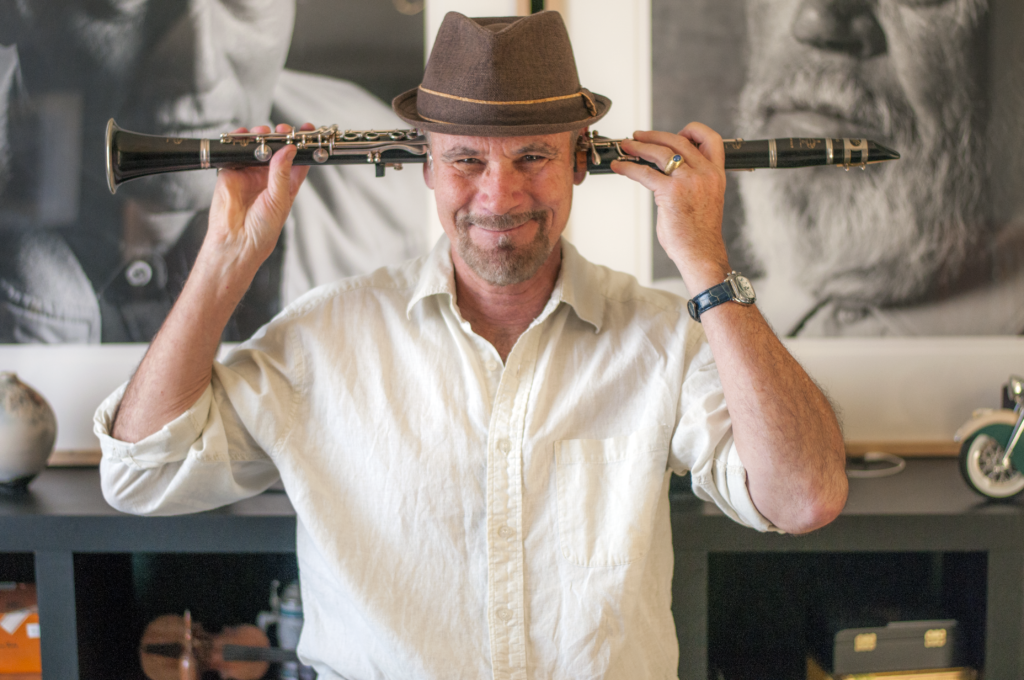
Life Lessons: “Don’t Have a Plan B”
Luck matters but you have to be prepared for it. It’s good to listen well. I learned to do that with my subjects. Listening to people helps you prepare for what you need to do.
Find people you can trust. I’ve learnt to rely on other people a lot more than I used to. I regret that I didn’t have a real mentor early in my life to help me stop spinning in circles. I did everything by trial and error. I could say something blithe like “follow your bliss,” but that doesn’t always work. Follow your bliss, but make sure you meet the people who can get you there. Self-reliance is a good thing, but complete self-reliance is a bad thing.
Have a problem that you want to solve then start the business and make sure that you can solve that problem and don’t let anything stand in your way. Make it happen. Life’s a pitch. Don’t have a Plan B. Do what you plan to do and persevere.
